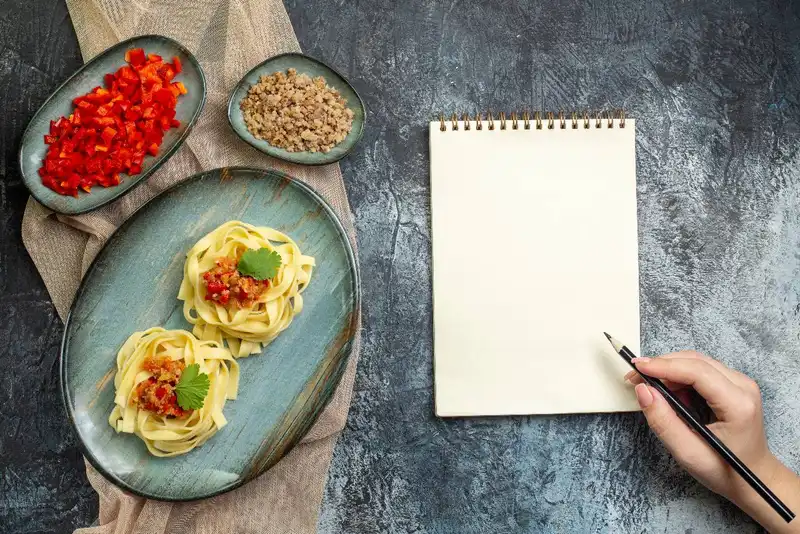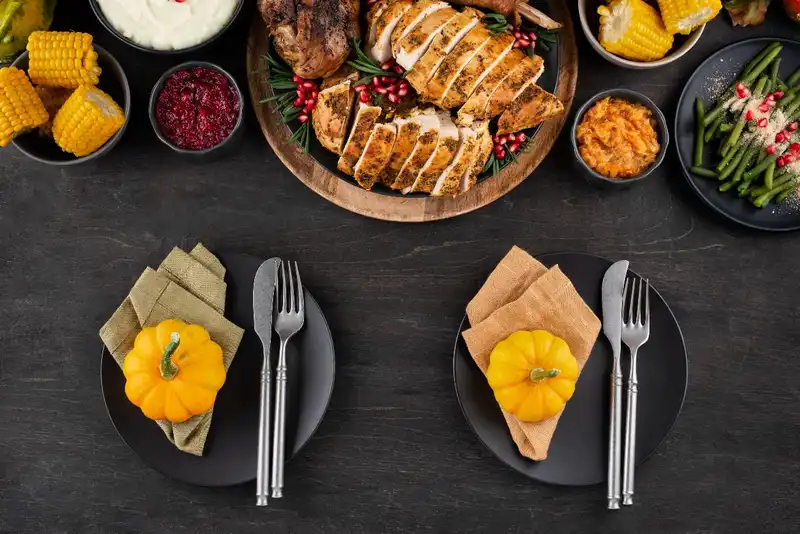How can recipe cards help with food cost management?
By specifying exact ingredient amounts and portion sizes, recipe cards prevent overuse of expensive ingredients and minimize waste. Accurate yields allow better inventory planning and more precise purchasing decisions.
Creating Recipe Cards Templates That Work for Your Restaurant
Overview
Running a restaurant means juggling consistency, speed, and quality every single day. Guests expect the same flavor and presentation whether they visit on a Monday afternoon or a busy Saturday night. Yet, without a clear system, even small variations in ingredients, cooking methods, or plating can lead to noticeable differences that impact customer satisfaction.
This is where recipe cards templates become a powerful tool. A well-designed template is more than just a note on how to prepare a dish - it's a blueprint for efficiency. By documenting every detail, from ingredient quantities to plating instructions, you ensure that your kitchen operates with precision. According to industry studies, restaurants that standardize recipes can reduce food costs by up to 10-15%, simply by controlling portions and minimizing waste.
Recipe cards also support staff training. Instead of relying on verbal instructions or memory, new team members have a clear reference point. This reduces errors, speeds up onboarding, and frees up senior staff to focus on service rather than constant supervision. For multi-location operations, recipe cards ensure every kitchen delivers the same standard, protecting your brand's reputation.
Start with the Basics

Before diving into design details or advanced features, it's important to understand the foundation of an effective recipe card template. At its core, a recipe card should function as a reliable, easy-to-read guide that any staff member can follow without confusion. When you strip away the extras, there are a few non-negotiable elements that every template should contain -
1. Dish Name - This may sound obvious, but labeling each card clearly prevents mix-ups, especially if your menu has similar items (for example, Classic Caesar Salad vs. Grilled Chicken Caesar Salad). Use consistent naming conventions across all cards to avoid miscommunication.
2. Ingredient List - Every card must include a complete list of ingredients with precise measurements. Instead of vague terms like "a pinch" or "a dash," use measurable units such as grams, milliliters, or ounces. Precision not only ensures flavor consistency but also plays a big role in cost control.
3. Preparation Steps - Step-by-step instructions should be short, action-oriented, and sequential. A line such as "Whisk eggs with cream until smooth" is clearer than "Prepare egg mixture." Clarity here saves time and avoids mistakes.
4. Cooking Method and Times - Note specific cooking techniques (grill, saute, roast) and exact times/temperatures. This prevents undercooking, overcooking, and wasted ingredients.
5. Plating Instructions - Consistent presentation matters as much as taste. Including plating details ensures your dishes look uniform, whether served by a seasoned chef or a new hire.
Keeping these elements consistent across all your recipe cards makes them easier to use and quicker to train with. Think of your template as the standard language of your kitchen - clear, structured, and universal. By setting these basics first, you create a strong foundation to build on in later steps.
Transform Your Restaurant Operations Now!
Effortless Inventory Tracking with Altametrics!
Standardize Ingredient Lists
One of the most common challenges in restaurant kitchens is inconsistency in how ingredients are listed and measured. Without a standardized approach, two chefs could interpret the same recipe in completely different ways - leading to wasted food, unpredictable costs, and uneven guest experiences. A carefully structured ingredient list within your recipe card template helps eliminate this problem.
Start by ensuring that every ingredient is listed in the same order it is used in the recipe. This makes it easier for staff to follow along while preparing dishes, reducing the likelihood of skipping or doubling an ingredient. For example, if the first step of a recipe is to whisk eggs and cream together, the ingredient list should begin with eggs and cream, not with salt or garnish.
Precision in measurement is equally important. Vague terms like "a handful" or "a splash" may work in home kitchens, but in a professional environment, they create room for error. Instead, rely on grams, milliliters, or standardized portion sizes. According to industry research, restaurants that move from approximate to exact measurements can cut food waste by up to 5%, directly protecting profit margins.
Consistency also extends to how ingredients are described. Instead of alternating between "bell pepper" and "capsicum" or "chili flakes" and "red pepper flakes," choose one term and use it across all recipe cards. This uniformity avoids confusion, especially in multicultural kitchens where staff may have different culinary backgrounds.
By standardizing your ingredient lists, you not only improve clarity but also gain tighter control over your food costs. Every chef, regardless of experience level, works from the same clear blueprint - ensuring each plate meets your restaurant's standards every time.
Document Step-by-Step Preparation Instructions
Even the most skilled kitchen team can struggle if preparation instructions are unclear or inconsistent. A recipe card is meant to be a reliable guide - not a puzzle for staff to figure out. Clear, step-by-step instructions ensure that every cook, whether new or experienced, can prepare a dish to the same standard every time.
When writing instructions, keep them short, direct, and action-oriented. Instead of vague phrases like "prepare the sauce," use specific commands such as "simmer tomatoes with garlic and onion for 15 minutes." This approach leaves no room for interpretation and reduces the risk of mistakes. A study on workplace efficiency found that employees complete tasks 30% faster when given clear, concise directions compared to open-ended instructions - a principle that applies in kitchens as well.
Another best practice is to organize steps in logical sequence. List them in the exact order they should be carried out, matching the flow of the cooking process. For example, prep steps like chopping vegetables should come before cooking directions, not after. This sequencing helps staff move smoothly through the recipe without backtracking or confusion.
Where necessary, include details that might seem obvious to a seasoned chef but could be overlooked by new staff. Notes like "stir continuously to prevent burning" or "allow the dish to rest for 2 minutes before plating" can make the difference between a dish that meets standards and one that falls short.
By carefully documenting preparation instructions, you're not only safeguarding food quality but also creating a stress-free work environment. Staff can focus on execution instead of second-guessing, which leads to faster service, consistent dishes, and happier guests.
Define Portion Sizes and Yields Clearly

Portion sizes and yields are critical details that every recipe card must include. Without them, dishes can vary widely between shifts, leading to inconsistent guest experiences and higher food costs. Research shows that poor portion control alone can raise food expenses by up to 20%, which can significantly impact profitability. To avoid this, your recipe cards should clearly document both portion sizes and yields.
1. Specify Exact Portion Sizes - Every element of the dish - proteins, sides, sauces, and garnishes - should have precise measurements. Instead of vague instructions like "add rice," write "add 150 grams of cooked rice." For proteins, avoid general terms like "chicken breast" and replace them with details such as one 6-ounce grilled chicken breast. This accuracy ensures consistency in both flavor and cost.
2. Define Yields for Each Recipe - A yield indicates how many servings a recipe produces. For instance, a soup recipe might yield 10 bowls at 250 milliliters each. By noting yields, your staff can prepare the right amount, reduce overproduction, and minimize waste. It also helps your purchasing team forecast ingredient needs more accurately.
3. Align Measurements with Kitchen Tools - Portion sizes are easier to follow when they match the tools used in your kitchen. For example, specify "one 4-ounce ladle of sauce" or "one
Add Plating and Presentation Guidelines
A dish isn't finished when the cooking stops - it's finished when it reaches the guest. Plating and presentation are as much a part of the dining experience as flavor. That's why recipe cards should include clear guidelines to ensure every plate looks consistent, regardless of who prepares it. Visual consistency reinforces your brand and gives guests confidence that they'll receive the same quality every time they visit.
1. Describe the Layout of the Plate - Provide simple, straightforward instructions for where each element of the dish should be placed. For example -"Place grilled salmon at the center of the plate, arrange vegetables neatly on the right side, and spoon sauce in a circular motion around the edge." Even brief guidance like this helps staff create visually appealing plates without relying on guesswork.
2. Note Garnishes and Final Touches - Small details like herbs, lemon wedges, or a drizzle of oil make dishes feel complete. Be specific - "Top pasta with 5 grams of grated parmesan and 2 basil leaves." Clear garnish instructions ensure consistency and prevent overuse of costly ingredients.
3. Use Images When Possible - Including a photo or simple sketch of the finished dish provides instant clarity. Visual references are especially useful for new staff, saving time and reducing mistakes. Even one high-quality image can make plating instructions easier to follow than a paragraph of text.
4. Emphasize Portion Appearance - Plating guidelines should reflect not only where items go, but also how they should look. For instance, "sauce should cover only one-third of the protein" or "stack fries vertically in a bundle." This level of detail helps maintain a professional, polished presentation.
By integrating plating and presentation guidelines into your recipe cards, you ensure every dish leaves the kitchen looking as good as it tastes - reinforcing consistency, brand identity, and guest satisfaction.
Digital vs. Printable Templates
Once you've built the content of your recipe cards, the next step is deciding how they should be used in the kitchen. Some restaurants rely on printed cards, while others prefer digital formats - or a combination of both. Choosing the right format depends on your workflow, staff needs, and budget.
1. Printable Recipe Cards - Printed cards are straightforward and accessible. They can be laminated to withstand spills, grease, and daily wear in the kitchen. Having a physical card nearby allows chefs to glance quickly at instructions without needing a device. This format is particularly useful in high-volume kitchens where speed and durability matter most. However, printed cards require reprinting whenever a recipe is updated, which can add time and cost if your menu changes frequently.
2. Digital Recipe Cards - Digital formats, such as PDFs, spreadsheets, or specialized kitchen management software, offer greater flexibility. Updates can be made instantly and shared with the team across multiple devices. Digital cards also allow for features like searchability, scaling recipes for different yields, and linking to photos or videos. The downside is that they depend on access to tablets, phones, or computers in the kitchen, which may not always be practical during peak hours.
3. A Hybrid Approach - Many restaurants find that a mix of both formats works best. Digital cards serve as the master record, easily updated and stored, while printed versions are made available for daily kitchen use. This balance ensures accessibility while keeping information current.
By choosing the right format - or combination - you create a system that fits your restaurant's workflow. The key is to make recipe cards easy to access, quick to read, and simple to update so your team can stay focused on delivering consistent results.
Review, Test, and Update Regularly
Even the best recipe cards are only as effective as their accuracy and usability. A recipe card should never be treated as a static document. Regular review and testing ensure your recipes remain consistent, cost-effective, and aligned with your restaurant's standards.
1. Test with Your Kitchen Team - Before finalizing any recipe card, have your staff test it in real conditions. Observe if the instructions are clear, if portion sizes are realistic, and if plating guidelines are easy to follow. Testing helps identify areas where steps may be confusing or measurements need adjustment, preventing mistakes during service.
2. Gather Feedback from Staff - Your chefs and kitchen staff are the ones using these cards daily. Encourage them to provide input on what works and what doesn't. Feedback can reveal overlooked issues, such as ambiguous instructions or impractical plating suggestions, and helps foster a sense of ownership and collaboration.
3. Update for Menu Changes and Cost Control - Recipes evolve over time due to seasonal ingredients, supplier changes, or menu updates. Regularly revising recipe cards ensures that ingredient quantities, portion sizes, and costs stay accurate. This keeps your food cost under control and maintains consistency, even as your menu evolves.
4. Set a Review Schedule - Implement a routine review cycle - quarterly, monthly, or as needed - so that recipe cards remain current and reliable. Scheduled updates prevent outdated information from causing confusion or mistakes, and they make onboarding new staff easier.
By reviewing, testing, and updating your recipe cards, you create a dynamic system that supports kitchen efficiency, cost management, and high-quality service. A recipe card is not just a reference - it's a living tool that grows with your restaurant.
Streamline Your Inventory. Order Smartly.
Start Simplifying Your Orders with Altametrics
Must-Read Content

Step-by-Step Guide to Creating Effective Recipe Cards for Your Restaurant













